
views
Cleansing Your Skin

Choose a cleanser suitable for your skin type. It is best to apply makeup to fresh, clean skin. Before applying makeup, wash your skin with a gentle cleanser that will support your skin type. If you have dry skin, look for a cream cleanser, which will help moisturize the skin while cleansing. Use a gel or foam cleanser if you have oily skin. This will get rid of any dirt and oil on your skin without irritating the skin. If you have combination skin, it means that some parts of the skin are oily and other parts are normal or dry. In this case, look for cleansers that are designed specifically for combination skin as these cleansers work to treat both oily and dry skin. If you have sensitive skin that is easily irritated, look for the most gentle cleansers you can find. These will usually be made from plant oils. If you have skin that is prone to breakouts, look for a cleanser that contains salicylic acid, benzoyl peroxide, or tea tree oil to help keep those pimples at bay.
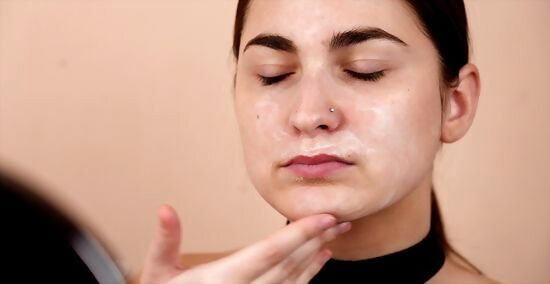
Cleanse your face. Wet your face with lukewarm water by splashing some water onto your face using your hands. Then, using a dime-sized amount, massage your chosen cleanser gently all over your skin. Do this for around 45 seconds to give the cleanser time to work, and then rinse thoroughly using lukewarm water. Be gentle when cleansing. The skin on your face is thin and sensitive, so there is no need to scrub vigorously. Just use your finger tips to massage gently in a circular motion. Be sure to rinse thoroughly. There should not be any suds of cleanser left on the skin. Pat your face dry with a clean towel. You don’t want to rub the skin dry as this may irritate the skin, leaving it red and flaky. Using warm water will help open the pores and lift dirt and bacteria from the skin, but avoid water that is too hot as it can dry out the skin.
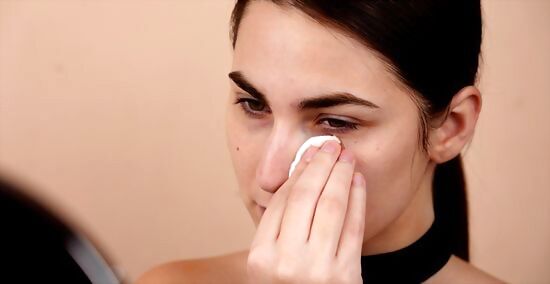
Apply an alcohol free toner. Many people overlook toner, but it should be an important step of your beauty routine. The purpose of toner is to swipe away any leftover dead skin cells, makeup, or other bacteria that your cleanser might have missed. Try to avoid toners with alcohol as the main ingredient, as these are typically too drying for skin. Squeeze a bit of toner onto a cotton ball or cotton pad and gently swipe it all over your face. The idea here isn’t to scrub the skin, but instead, to gently wet the face with the toner. Notice what comes off of your skin. Often times, you will notice some leftover foundation on the cotton ball after applying toner. This is evidence that you didn’t get all of your makeup with the cleanser.

Exfoliate your skin. Once or twice each week, you should exfoliate your skin to get rid of any build up on your skin. If your skin is red and feels raw, you know you’re exfoliating too often. On the other hand, if your skin looks dull and doesn’t feel smooth, you probably need to exfoliate a bit more often. You can exfoliate by using a washcloth during your normal cleansing. Use the cloth instead of your fingertips to gently massage the cleanser into the skin using circular motions. Be sure to wash the cloth after use, though. If you reuse it, you may be rubbing old bacteria all over your face. You can also use scrubs that you buy at the store. These are cleansers that include an ingredient that exfoliates. You can also make your own scrub with ingredients such as sugar and olive oil.

Get into a routine. You should absolutely be washing your face each night before you go to bed with the gentle cleanser in order to remove impurities that have built up on your skin throughout the day. You should then wash your face again in the morning (which is probably right before you will apply your makeup anyways). If you wake up late one day, and don’t have time to wash your face, at least splash some cool water on your face to wake up your skin. It will also help you be more alert, and give your skin a refreshed look.
Applying Moisturizer
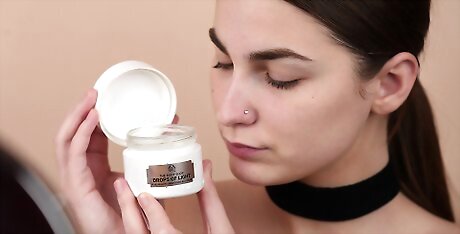
Choose the right moisturizer. Ideally, you will have two moisturizers, one for day that is lighter and includes an SPF, and one for night that is a bit heavier. Before applying makeup, you will want to use the lighter moisturizer. Make sure that your day time moisturizer contains at least SPF 15 to protect your skin from the sun. If you struggle with breakouts and/or oily skin look for oil-free moisturizers that are non-comedogenic. If you have dry skin you can look for creams that are a bit thicker to wear during the day. A thicker cream will also give you a more dewy look.
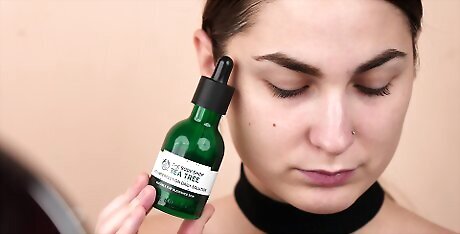
Consider applying a serum. If you are prone to dry skin, adding a serum to your routine can help add a little extra moisture to your face. With most facial products, it’s important to remember that a little bit goes a long way, and this is especially true in the case of serums. Look for serums that contain antioxidants, such as Vitamin C; anti-inflammatories, such as Zinc; and hydrators such as amino acids. Apply this after cleansing and toning, but before applying moisturizer. If you want to incorporate a serum into your routine, but have oilier skin, try applying the serum at night. Gently dab a few dots of serum on your cheeks, forehead, and chin and gently pat into the skin.
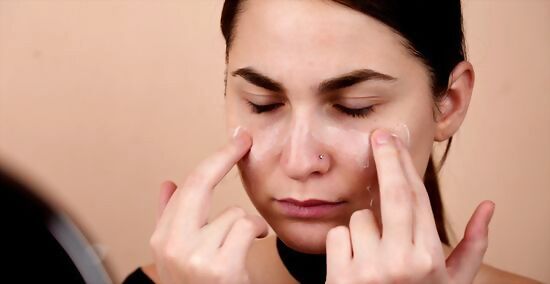
Press the moisturizer into your skin. Most people think that you should massage the moisturizer into your skin, but for your face this isn’t true. The best way to apply moisturizer is to gently press the moisturizer into your skin using your finger tips. This will ensure that you don’t apply too much moisturizer, which can lead to breakouts and/or oily skin. Pressing the skin will also draw the blood to the top of the skin, giving your skin a rosy glow.

Allow the moisturizer to sink in. Before you move on in your face prep routine, you will want to give the moisturizer a chance to sink into the skin. Give it at least 5 minutes, this way your skin will be ready for primer. During this time, you can do something else, like choose your outfit for the day. If it’s morning, you can make yourself a cup of tea or coffee to drink while you apply your makeup.
Priming Your Skin

Try misting your face with rose water. This isn’t required, but many makeup artists believe that a splash of rose water is key for getting that glowing skin we all want. If you want to do this, put some rose water in a spray bottle, turn it to mist mode, and mist it all over your face. Let the rose water dry before moving on. Some also suggest misting rose water on your face once you have completely finished your makeup, and it has all had plenty of time to dry. Be sure to close your eyes as you are misting. Look for all-natural rose water that doesn’t contain added chemicals.
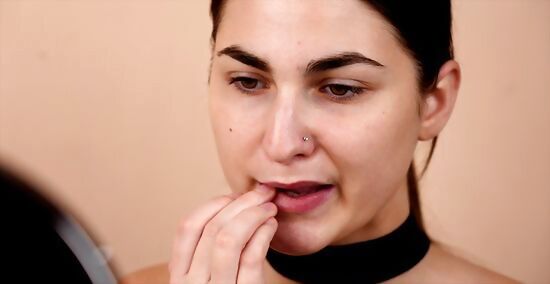
Prepare your lips by exfoliating and moisturizing them. Before applying any color, you will need to prepare your lips in order to help the color go on smoothly and evenly, and to help it last longer. Exfoliate your lips using a clean, damp washcloth. Using small circular motions, gently massage your lips to remove any dead skin, which will make your lipstick look uneven. If your skin is sensitive, you should do this at night, before going to bed rather than right before applying makeup. Apply a lip moisturizer. Before applying any color, you will want to make sure your lips are moisturized properly in order to help keep the color from soaking into your lips. Use your lip balm of choice, and smooth it on your lips. Allow it to set for at least 10 minutes in order for the moisturizer to have adequate time to soak into your lips. If you are short on time, you can apply the lip balm before you apply any of your other makeup. By the time you've finished the rest of your makeup, your lips will be good to go.

Choose a primer. No matter how involved your makeup routine, applying a primer prepares your skin for anything you are going to put on it. There are many, many types of makeup primer available on the market, so choose one that will suit your needs. For example, if you suffer from acne or redness on your face, a light green primer will work well to counteract the redness. Primers that contain silicone are also a great option as the silicone acts as a barrier. This not only helps makeup go on smoothly and last longer, it also helps keep the oil in your skin from mixing with your makeup. Makeup primer also helps fill in any lines in your skin so that makeup doesn’t crease in them.
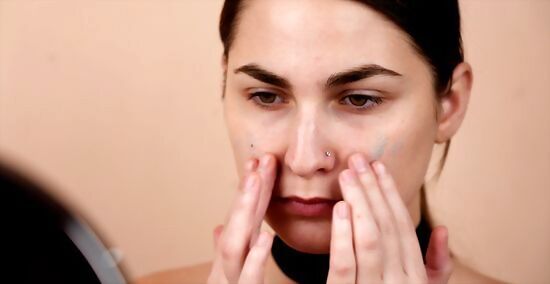
Dab the primer all over your face. You can apply primer all over your face or on trouble spots that you have. If you only want to apply it to a few spots, use a concealer brush to gently dab it on the area. If you want to apply it to your whole face, squeeze a bit of primer onto your finger and dab it all over. Then use your finger tips to gently massage it into the skin. If you’re not in the mood to apply foundation, primer can also be worn on its own to give you a more polished look throughout the day.
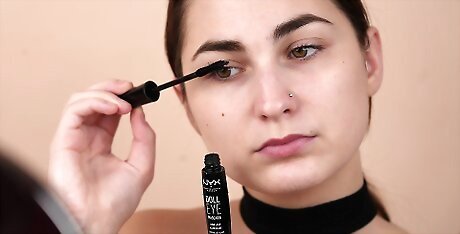
Apply makeup and dazzle away . Now that you’ve taken care to prepare your skin properly, you can apply your makeup as you normally would. Remember that the better prepared your skin is for makeup, the better your makeup will look in the end, and the better it will last. If you are consistent in your routine, your skin will look great even without makeup, which means you won’t need to use much makeup in the first place.




















Comments
0 comment